(see more files and FAQs here) This is one of my favorite chapters in Algebra II because it’s the first time we discover that:
I used to start with this page:
But then my co-teacher made this page that I liked and used this year:
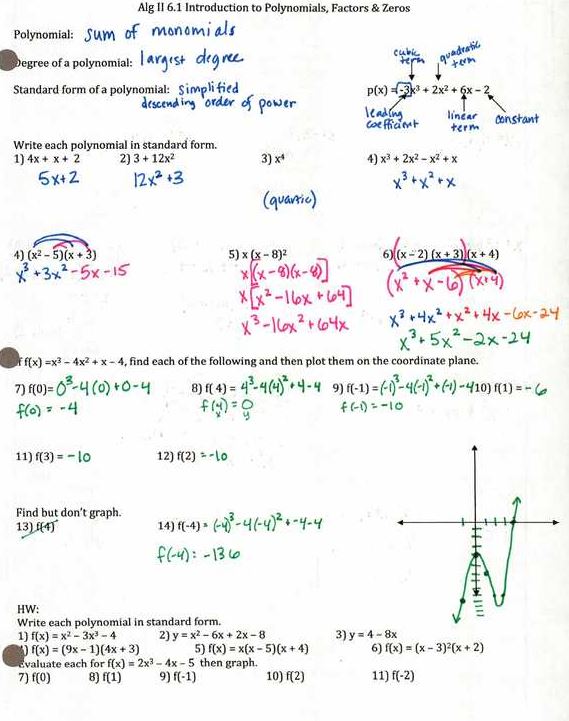 (file here) and I just did the bottom part of the first page in class on the board. And during the same class period, we jump into this:
(file here) and I just did the bottom part of the first page in class on the board. And during the same class period, we jump into this:
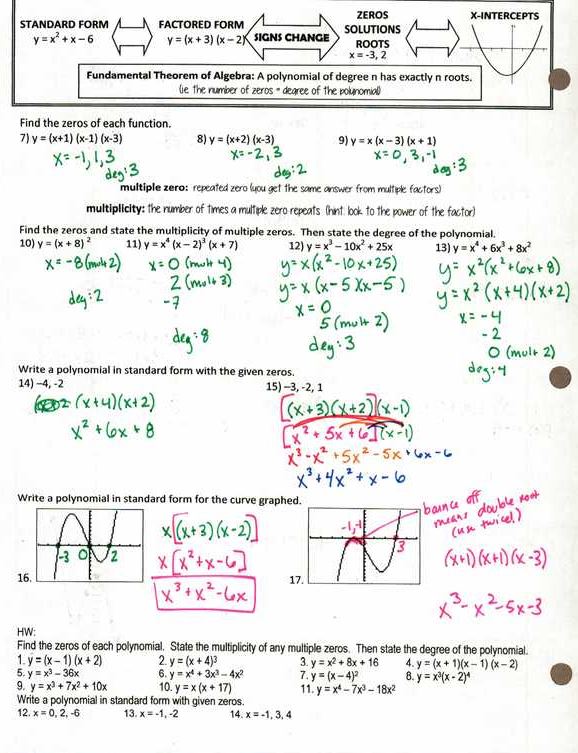 (this is the second page of the previous file). Then it’s time for some graphing!
(this is the second page of the previous file). Then it’s time for some graphing!
If you want to do some discovery, I’ve had success with this page:
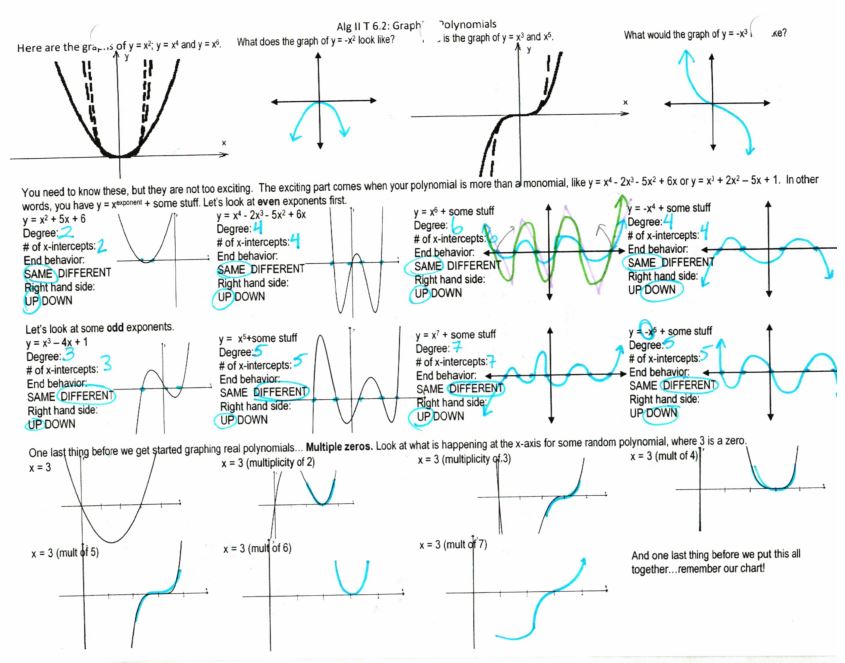 (file here) but for the sake of time, I’ve been doing the same thing with this desmos file. Then we put all of our conjectures together and practice:
(file here) but for the sake of time, I’ve been doing the same thing with this desmos file. Then we put all of our conjectures together and practice:
 (file here) after teaching this about a bazillion times, I now really like how it goes. The only thing I may change next year (and maybe more so in precal) is talking about how x^3 has three roots at 0, with (x-2)(x-3)(x+1) we just translate those three roots to 2, 3, and -1 just like we translated (x +2)^2. Is this even a thing or am I just seeing transformations everywhere? Also, yes, we do call cubic functions and triple roots “John Travoltas” (I stole it from someone on the #MTBoS) because:
(file here) after teaching this about a bazillion times, I now really like how it goes. The only thing I may change next year (and maybe more so in precal) is talking about how x^3 has three roots at 0, with (x-2)(x-3)(x+1) we just translate those three roots to 2, 3, and -1 just like we translated (x +2)^2. Is this even a thing or am I just seeing transformations everywhere? Also, yes, we do call cubic functions and triple roots “John Travoltas” (I stole it from someone on the #MTBoS) because:

Then we spend a day practicing:
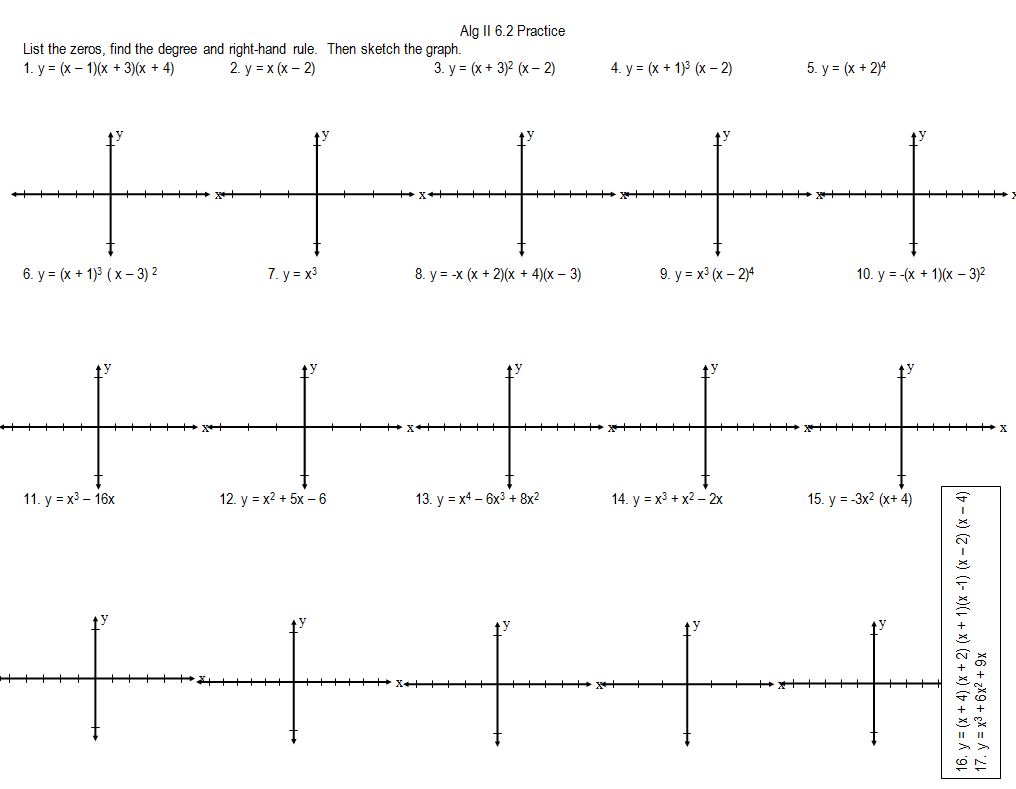 (file here). I usually go around and stamp each row when they have completed it successfully, and then can only turn it in once it has all four stamps.
(file here). I usually go around and stamp each row when they have completed it successfully, and then can only turn it in once it has all four stamps.
At this point I throw in solving sum/difference of cubics and quartic trinomials:
 (file here) S.O.A.P is a handy mnemonic that I learned from my coteacher. It tells you the signs of the sum/difference formula: Same, Opposite, Always Positive. It becomes a bit of a chant: “Cube root; cube root, square, multiply, square; same sign, opposite sign, always positive.”
(file here) S.O.A.P is a handy mnemonic that I learned from my coteacher. It tells you the signs of the sum/difference formula: Same, Opposite, Always Positive. It becomes a bit of a chant: “Cube root; cube root, square, multiply, square; same sign, opposite sign, always positive.”
Some homework:
 (file here) Because of scheduling, it was a good time to throw in complex numbers for a day or two:
(file here) Because of scheduling, it was a good time to throw in complex numbers for a day or two:
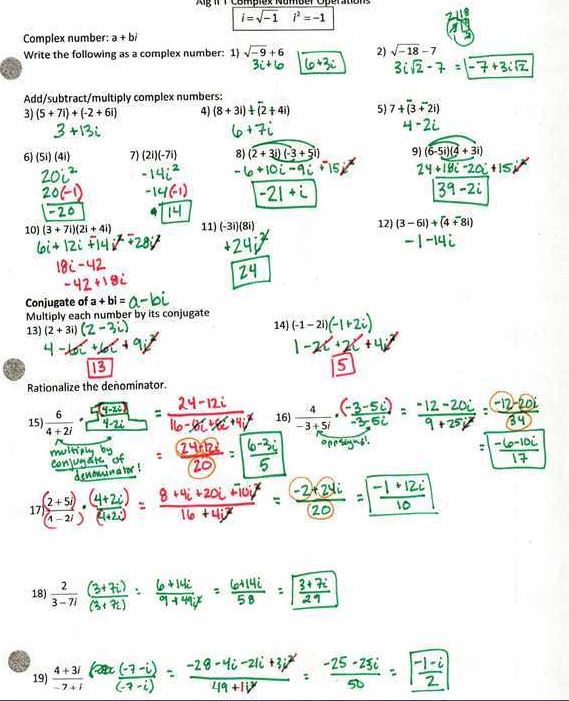 (file here) Ugh, now there’s something that can be taken out of Algebra II if you ask me (but no one ever asks).
(file here) Ugh, now there’s something that can be taken out of Algebra II if you ask me (but no one ever asks).
At this point I usually take a break and quiz:
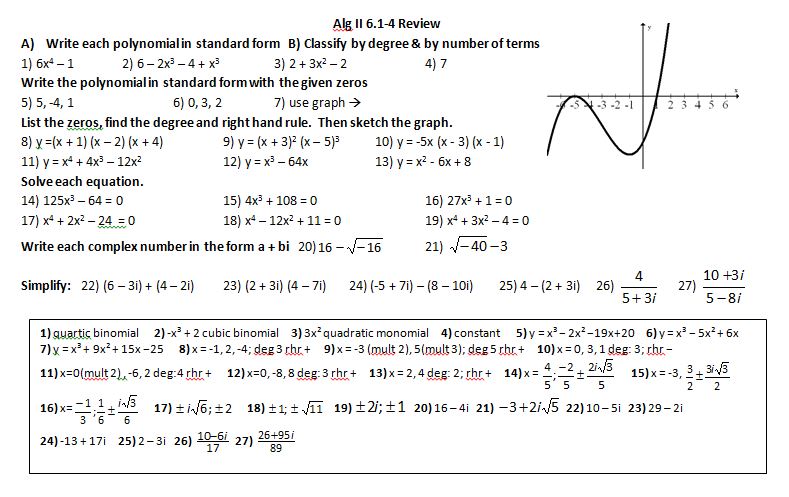 (file here). Yup, there’s a review powerpoint as well:
(file here). Yup, there’s a review powerpoint as well:
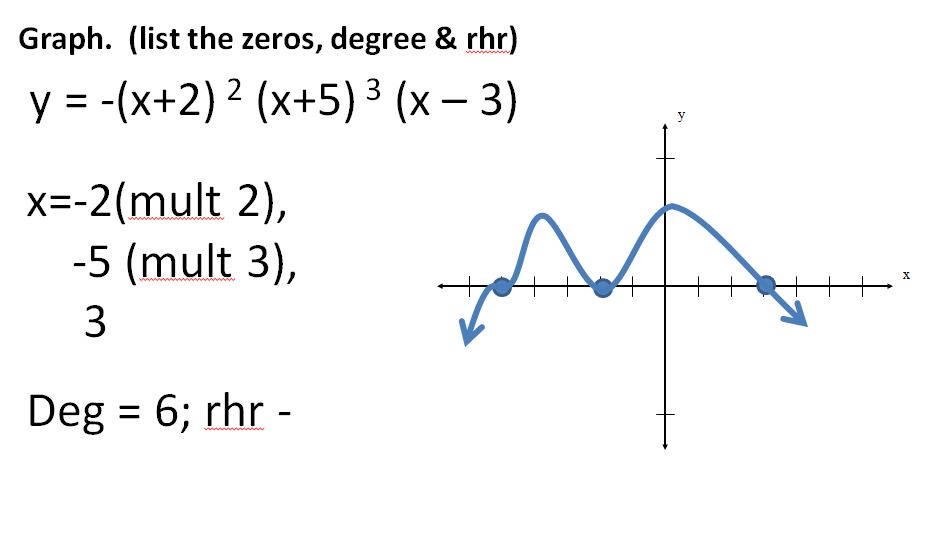 (file here).
(file here).
Then it’s time to really get our hands dirty with some division:
 But I really want to try the box method next year as promoted by @TypeAMathland (especially since I can probably get a tutoring session since Anna is going to be my #TMC15 roomie!). But with just a bit of modification I can still use the same homework:
But I really want to try the box method next year as promoted by @TypeAMathland (especially since I can probably get a tutoring session since Anna is going to be my #TMC15 roomie!). But with just a bit of modification I can still use the same homework:
So the Algebra II book that we use likes to spend a section on “I give you a factor, you find all the rest” but that seemed like a waste of a day, instead I go with “I give you a factor, find all the zeros” as a lead-in for when “I give you no factor”:
 I learned a while back that it’s handy to have them figure out how many answers there should be and write out that many blanks. Otherwise many would forget that the original given factor also told you about a zero.
I learned a while back that it’s handy to have them figure out how many answers there should be and write out that many blanks. Otherwise many would forget that the original given factor also told you about a zero.
Here’s another day that I’m not a fan of:
 (file here). I finally took a stand and stopped teaching the “what are the possible number of real/imaginary roots this could have?” because WHY? I almost want to take a stand on “hey, I’m only going to give you 2/3 of the answers and one of them happens to be imaginary so do you think you could figure out the third?” because WHY? but I’m pretty sure that is specifically in our course of study. At least it’s a nice breather after all the heavy lifting we’ve been doing.
(file here). I finally took a stand and stopped teaching the “what are the possible number of real/imaginary roots this could have?” because WHY? I almost want to take a stand on “hey, I’m only going to give you 2/3 of the answers and one of them happens to be imaginary so do you think you could figure out the third?” because WHY? but I’m pretty sure that is specifically in our course of study. At least it’s a nice breather after all the heavy lifting we’ve been doing.
Then finally the moment we’ve all been waiting for! Let’s solve some polynomials!
After doing a couple without the calculator, we start using the graphing calculator to find the first zero (or the first two if it’s a quartic).
Then let’s wrap it up:
 (file here). And of course a review powerpoint:
(file here). And of course a review powerpoint:
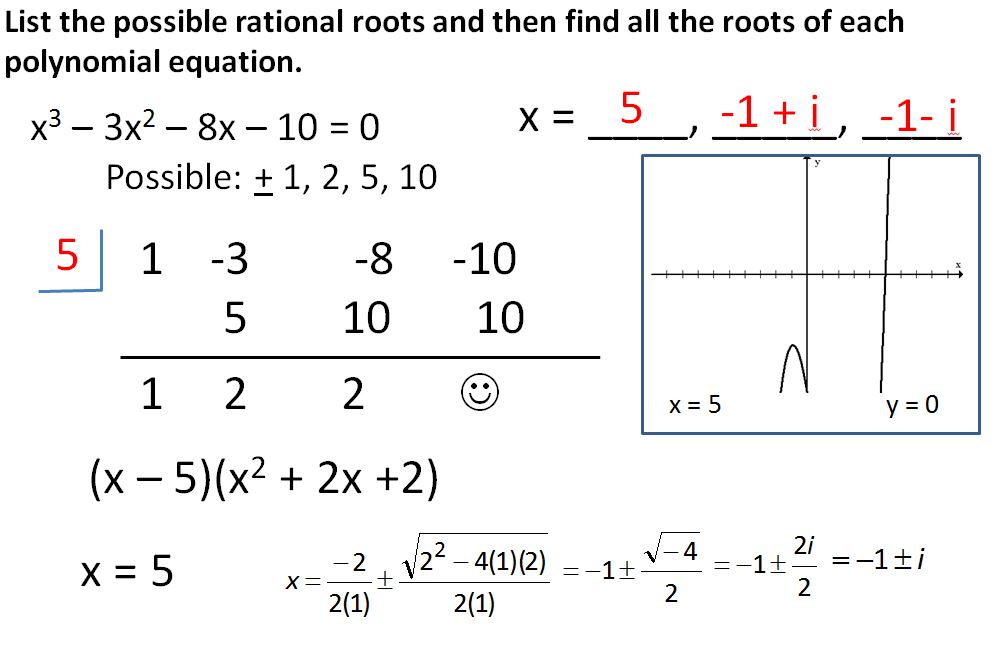 (file here).
(file here).
Are polynomials one of your favorite things? Do your kids know who John Travolta is or do you have to do the dance for them? Wait, am I the only one doing the dance?

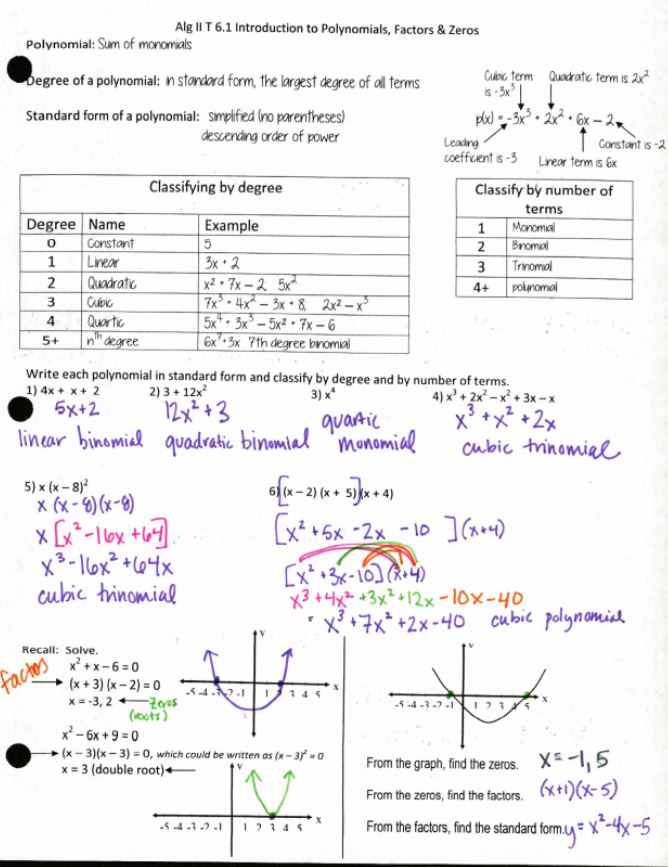

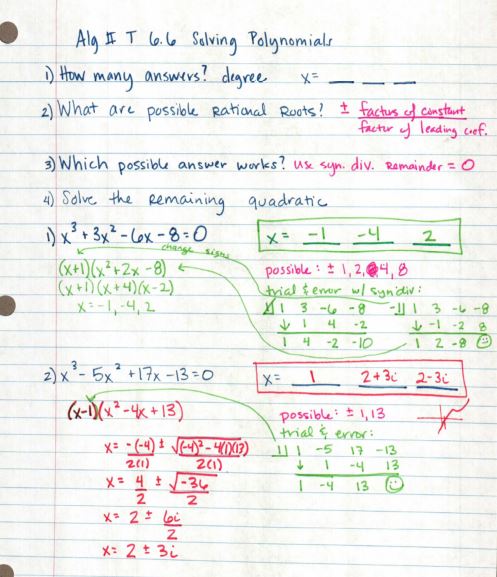
Jane Taylor
June 29, 2015 at 11:46 am
I had never seen the box method used for division. I had always thought of the box method as one of those “nix the tricks” things that gave students a trick for doing a common computation, but possibly at the expense of conceptual understanding. The video explained the method, but not the reason why it worked. Are you concerned about that? When you first heard about it, was it developed with more conceptual underpinnings for the students? That being said, now that I have seen it used for division, I can think of ways of tying it all together with finding area numerically and then using algebraic symbols. I also wonder if there is any reason that leaving out the traditional method of polynomial division would hurt kids down the road. Have you heard any discussion about that?
Meg Craig
June 29, 2015 at 1:16 pm
Thanks for your thoughtful comment and questions, Jane! W
hen we first were talking about it on twitter, I think it came up in the context of teaching multiplication with the box method first, then dividing is just “figuring it out backwards.” (maybe this post explains it better? http://www.mathrecreation.com/2009/03/dividing-polynomials-grid-method.html) I don’t have any issue with long division, other than it seems my student have a lot of issues with negatives (even with “draw that line and change those signs” refrain) and Anna said she didn’t see any of that with the box method, which makes me at least interested. I also feel more like it might replace synthetic division rather than long division (but maybe both?). I also saw somewhere that some lower grades were using the box for multiplying double digit numbers (here’s a quick example I googled: http://static.mumsnet.com/cms/uploads/learning/maths/grid-method-explained-3.jpg), so that’s kind of interesting if we could carry that idea throughout math. I can’t think of anything where you explicitly have to use long division to get an answer, but I only teach through precal. I also like the idea that unlike synthetic division, it can be used for any type of divisor.
I think I will have multiple Alg II classes next year, so I may do some experimental trials in some classes and report back!